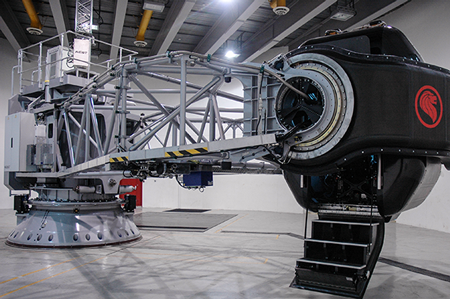Latest milestone in Thales's critical contribution to defence training
The opening of the new Royal Navy sonar training facility on 25 January 2018 is the latest chapter in Thales's long-standing pedigree of being able to listen to the unique demands of a customer and jointly introduce an innovative solution.
Thales's range of sensors and systems give the UK's armed forces that vital situational awareness capability, but did you know our expertise in managed services and training gives military personnel that added crucial advantage in realistic training?
Our services and support expertise also helps keep our breadth of sensors and systems in optimum shape 24/7 across the world.
We are proud to be the 'eyes and ears' of the Royal Navy Fleet - our sonar, optronic sighting systems, communication systems and electronic warfare are critical enablers.
In 2013, the Navy set up the Sensors Support Optimisation Project, awarding Thales a 10-year contract to provide in-service support for its major Thales-provided systems. The contract, which builds on the successful Contractor Logistics Support contract - won by Thales in 2003 - is expected to deliver savings of around £140 million.
Thales experts are embedded at navy waterside bases in the UK and overseas to ensure we are there for the navy to fix or replace our systems - a highly-successful customer first approach.
For the Royal Air Force, Thales has been providing training services for aircrew for more than 20 years. To date, we have clocked up 57,000 simulator flying hours over 38,000 sorties, and trained more than 600 RAF pilots.

Training takes place in a simulated cockpit that's mounted on a long arm rotating at speeds of up to 34 revolutions per minute to create an incredible and realistic 9G. High G can simulate a Typhoon, Hawk T2 or the new F-35 Lightning aircraft.
We can also take a fresh approach to complex issues - take for example, the Air Defence Availability Project (ADAPT) which faced a highly-challenging multi-contractor approach to support the high velocity missile systems in service with the Army and Royal Marines worldwide.
ADAPT's challenge was to simplify everything by giving a single supplier responsibility for all services and technical support - while guaranteeing 100% availability during peace time and 85% on operations.
The contract covers all aspects of the vehicle- and shoulder-launched missile systems - everything except the missiles. All the army has to do is take delivery, and take it on exercise. When the exercise is over, it is returned to Thales for restoring to readiness.
When the MOD awarded the contract to Thales it immediately realised savings of more than £100 million over the course of the contract. Thales's service has been so effective that the MOD has been able to extend the life of the equipment right through to 2026.